On Sunday 2nd July about 25 members of FBA and DWFBA arrived at Murray Macgregor’s queen rearing unit near Blairgowrie. There was lots of car-sharing and I was lucky enough to have a lift in Stewart Kerr’s open-topped sports car which made the trip even more enjoyable!
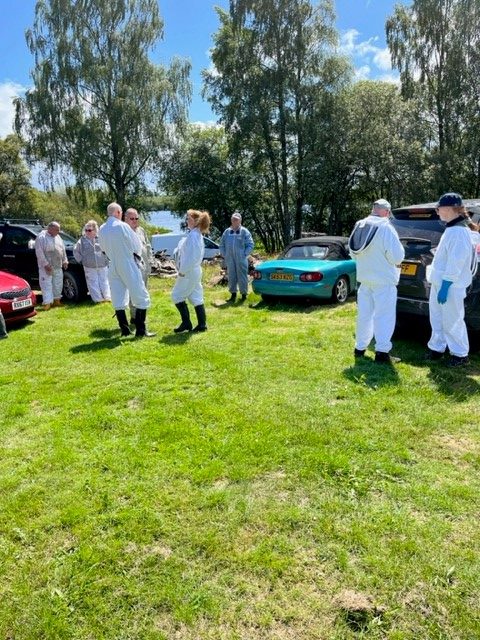
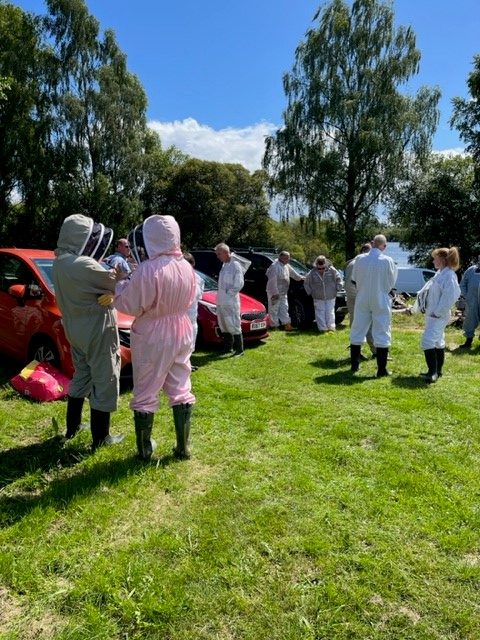
We parked our cars near the loch and ate the picnics we had brought while looking in astonishment at the many, many nucs, mini nucs and full hives, and Murray’s assistants Jolanta and Saskia, both from Poland, finishing off their morning’s work among them.


Then we got into our bee suits and gathered around Murray, who gave a general introduction to all they did there. Rearing their own (and for sale) queens had started about 2004, when Jolanta produced 170 new queens. They now produce about 2,000 each year. Always selecting the best queens to breed from, they have produced bees which are gentle, productive and even chalk-brood free. Any colony which produces even one cell of chalk brood is removed from the site and put to work in his other apiaries. We were divided into three groups, and each group had a session with Murray sitting on a nuc with no veil or gloves, demonstrating how gentle the bees were and how youthful even 4-year-old queens were, as his system prevented them from laying too many eggs. The breeder nucs were regularly emptied of some of the brood (used for grafting etc and building other nucs) and given fresh foundation to draw out.
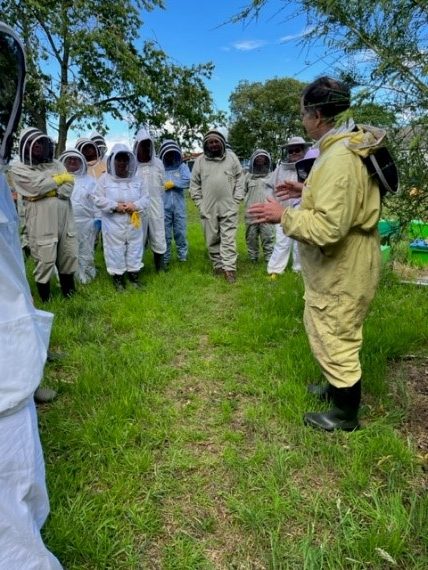
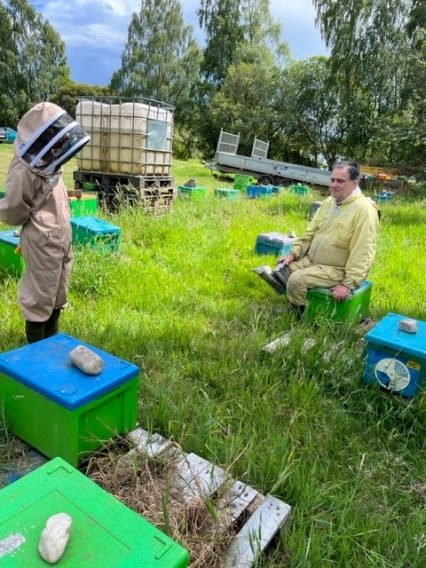
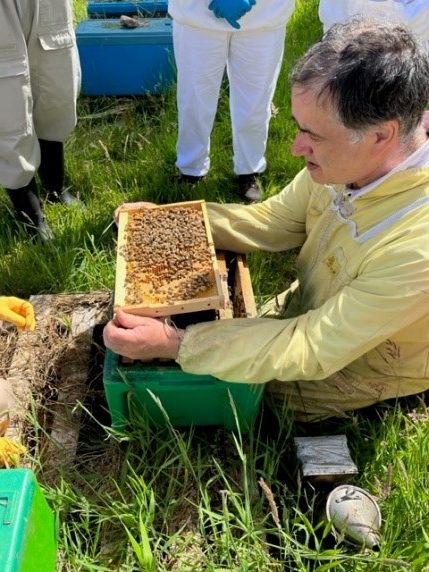
Each group also had a session with Yolanta and Saskia, who demonstrated how they did artificial insemination (though most of their queens are mated naturally), how they grafted day old larvae into cups on brood frames, and how a couple of days before the queens were due to emerge, they covered the queen cells with a hair curler-like protector and put them into the incubator for their last couple of days before emerging. When they held the cell to the light and saw the virgin ‘waving’ they knew she was about to emerge, and when she did, they took down the remains of the queen cell so that the queen could reach the last of the royal jelly. She would then be put into a mini nuc to get mated, and once mated and laying put into a queen cage with 6-8 workers attending her and sold!
Murray then explained how the grafted larvae were put into a starter colony for a week, then a finisher colony for another week, before being taken back to the shed and put in the incubator to emerge. The starter colony was a double brood box, and the frame of grafts was put in the top box on the far-left side, with a frame of new eggs and young larvae beside it to encourage nurse bees to feed the grafts. The bottom box was divided into two halves, with a board between them and the queen in the right-hand half covered by half a normal excluder. This meant the grafts were far enough away from her for the nurse bees to raise the new queens.
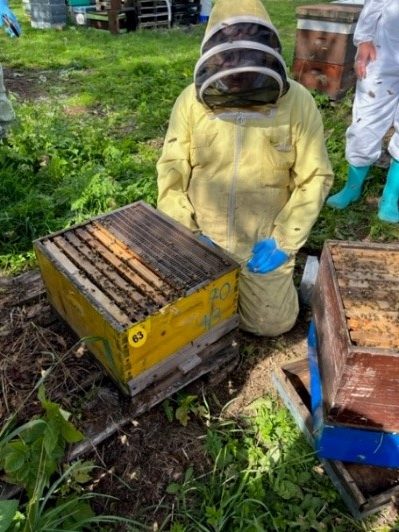
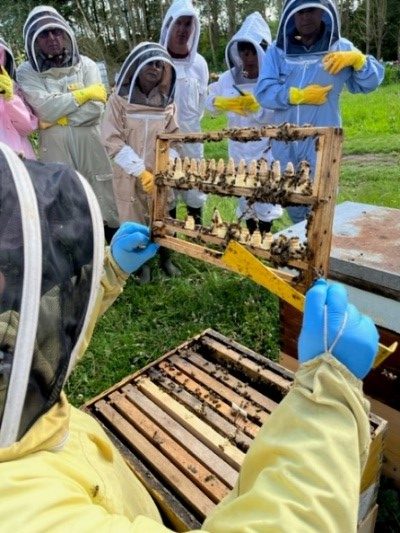
The whole process was fascinating, and everyone was tremendously enthusiastic. I was particularly impressed by the cleanliness of the brood frames, not a trace of propolis, and the beautiful wax capping’s. The demonstration had started about 2pm and finished about 5pm, when we thanked Murray and the girls for their time, and FBA committee member David Morland, who had organised the whole trip and to whom our thanks must go, gave Murray a bottle of whisky and the girls a beautiful bouquet and a box of delicious-looking biscuits.
It is difficult to imagine a better bee-day, so we have decided to repeat the trip next summer!

